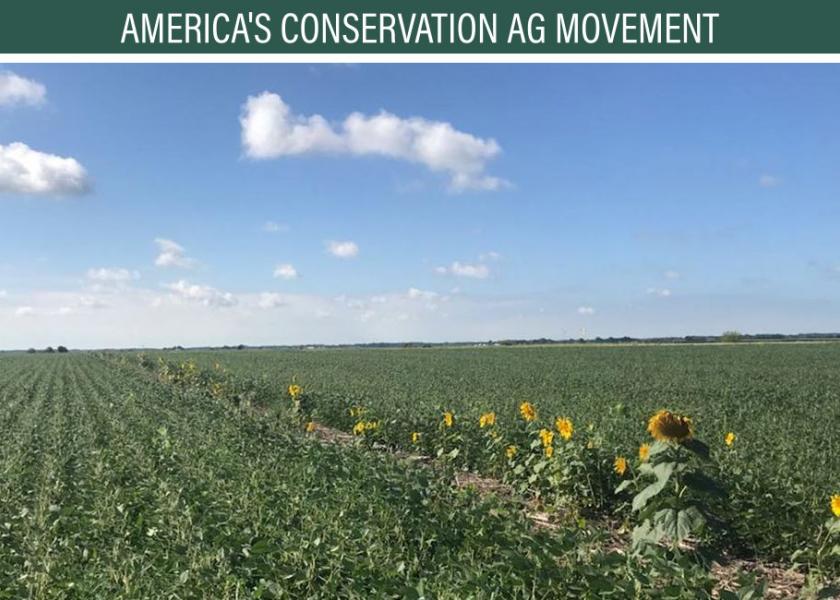Keep Dollars In Your Pocket With These Conservation Practices

Building trust in food begins with empowering farmers through one of the largest and most diverse conservation- and sustainability-focused public-private partnerships in our nation’s history: America’s Conservation Ag Movement. To find the latest news and resources related to the Movement, visit AgWeb.com/ACAM.
Dallas Glazik is encouraging farmers to focus their conservation efforts this year on what he calls the “red acres.” Those are fields, or more often areas within them, that show up as red—rather than green—on your yield monitor or in Normalized Differential Vegetation Index (NDVI) field imagery.
“When we focus on those areas we can see a positive financial result, most often in dollars saved,” says Glazik, a farm bill biologist for Pheasants Forever and Quail Forever, based in central Illinois. Here are three examples Glazik often recommends.
1. Forego planting end rows, ponding areas and along tree lines. Glazik says these are some of the easiest starting points for conservation but can require a mindset adjustment for farmers accustomed to planting every part of every field.
2. Get back to nature with prairie strips. Glazik says in soybean fields with prairie strips installed over 10% of the field area, farmers can see a 5% to 40% increase in yields thanks to improved pollination of the crop.
“I had one farmer who had his fields’ average yield increase by 6 bushels per acre,” Glazik notes. “This increase will give him a larger basis for crop insurance, allowing him to weather more storms, as well as increase the yields for any government payments such as the Market Facilitation Program.”
The results from a decade-long study by Iowa State University, and published in 2017, shows “converting as little as 10 percent of the cropped area to prairie conservation strips reduced soil loss by 95 percent, phosphorus losses in surface runoff by 77 percent, nitrate concentrations in groundwater by 72 percent and total nitrogen losses in surface runoff by 70 percent, compared with all-crop watersheds. Pollinator and bird abundance more than doubled.” (Read the Iowa State research story summary at https://bit.ly/2K6wPsw)
3. Don’t overlook fields that provide no return-on-investment. That seems an obvious consideration, but sometimes answers to problems hide in plain sight. Glazik recalls working with one farmer who had incurred -$47.12 on an 88.3-acre field that was in a corn-soybean rotation.
“Upon review, we saw that his cash rent was the biggest expense and was causing him to lose money,” Glazik notes. “So, we worked with his landowner and took 32.6 acres and converted them into CRP (Conservation Reserve Program), which ended up compensating the landowner $234 per acre and resulted in the farmer profiting $70.87 per acre across the remaining farm. The ROI turnaround went from -5.34% to +8.03%.”
Farmers looking for additional conservation ideas and potential funding can also check out a new report by the National Association of State Department of Agriculture and the Environmental Defense Fund, Innovative State-Led Efforts to Finance Agricultural Conservation, available at https://bit.ly/2O8qTlw.
Farming Five Unites Conservation and Profit
Planting Date Affects Replant Decisions
Ferrie: Beat The Carbon Penalty While Using Less Nitrogen







